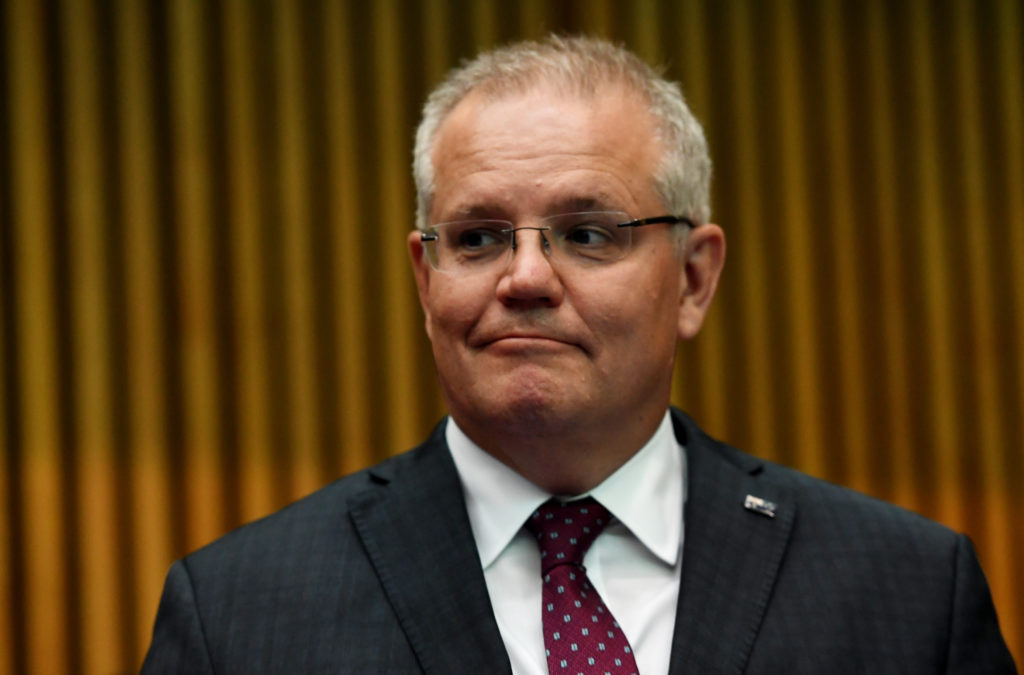Art World
Art Industry News: Australia’s Prime Minister Is Eliminating Its Federal Art Department + Other Stories
Plus, Tufts University takes down the Sackler name and a Berlin artist collective apologizes to Jewish leaders for its latest project.

Plus, Tufts University takes down the Sackler name and a Berlin artist collective apologizes to Jewish leaders for its latest project.

Artnet News

Art Industry News is a daily digest of the most consequential developments coming out of the art world and art market. Here’s what you need to know on this Friday, December 6.
Science Museum Is Accused Covering Up Its $2.6 Million Gift – London’s Science Museum plans to hang on to a £2 million ($2.6 million) donation from the Sacklers. The activist group Culture Unstained has accused the museum of trying to hide the “dirty money.” It has not spent the gift on its intended purpose—new galleries about medical history—but plans instead to spend the money on other projects. A museum spokesperson say says the gift “would be most effectively applied to support work across the museum.” (Guardian)
French Strikes Shutter Museums – Museums across France shut or reduced their opening hours on Thursday because of strikes, and they’re still going on today. The mass walkout of workers is a protest against president Emmanuel Macron’s plan to overhaul France’s pension system. The Louvre has shut some galleries while the Musée d’Orsay, Palais de Tokyo, and Musée Guimet remain closed in Paris. The major El Greco show at the Grand Palais has stayed open, however. Monuments that are closed include the Eiffel Tower. (ARTnews)
Australia Cuts Its Federal Arts Department – Prime minister Scott Morrison of Australia has announced that he will ax the country’s federal Communications and Arts Department as of February 2020. The move marks “a massive backwards step culturally for Australia,” according to Esther Anatolitis, executive director of the National Association for the Visual Arts, who added that she was “gobsmacked” by the decision. The old body will now be part of a new federal agency called Infrastructure, Transport, Regional Development and Communications. It remains unclear how the arts resources will be affected. (SBS News)
Artists Apologize for Use of Holocaust Victims’ Ashes – A German collective has apologized for incorporating an urn containing Holocaust victims’ ashes in a temporary memorial. The group, called the Centre for Political Beauty (ZPS), unveiled its anti-Nazi installation on Monday in Berlin. It was immediately condemned as insensitive and tactless by some Jewish leaders and the International Auschwitz Committee. The ZPS issued a statement regretting hurt caused to Jewish institutions, associations or individuals “who feel that our work disturbed the peace required for the dead.” The memorial stands opposite the Reichstag in Berlin. (BBC)
London Old Master Sales Lack Sparkle – Sotheby’s Old Master sales in London totaled £14.2 million ($18.6 million), which is less than half the equivalent sale last year. Christie’s managed better with a sale totaling £24.2 million ($31 million) this week. (The Art Newspaper)
$150,000 in Stolen Art Returned to a Toronto Woman – A Canadian auction house discovered that six paintings consigned for sale were listed as stolen in art databases and returned the works to their rightful owner, a woman in Toronto. A thief had broken into the woman’s storage unit and made off with works by artists David Alexander, Casey McGlynn, Merdie MacPhee and Oscar Lakeman. (Claims Journal)
Master Drawings New York Reveals 2020 Highlights – For the 14th edition of the week-long gallery event, 25 dealers will present drawings, paintings, watercolors, sculptures, and oil sketches created between the 14th and 21st centuries. David Tunick will show a pastel by Odilon Redon, Didier Aaron has a drawing of a monk by Domenico Tiepolo, and Jill Newhouse Gallery
will show a watercolor by Paul Cézanne, among many other works. (Press release)
US College Removes the Sackler Name – Tufts University is stripping the Sackler name from its buildings and programs because of “the human toll” of the opioid epidemic. The activist artist Nan Goldin, an alum of Tufts, welcomed the news, posting on Instagram: “My alma mater is the first to do the right thing… Tell your schools to follow their lead.” A lawyer for the Sackler family has criticized the decision. (TAN)
Houston Contemporary Names Director – The Contemporary Arts Museum Houston has named Hesse McGraw as its new director. He succeeds Bill Arning, who abruptly resigned last year. McGraw is a former head of exhibitions at the San Francisco Art Institute who is currently a partner in a design firm. (ARTnews)
Civil War Soldiers Used Hair Dye for Their Selfies – Archeologists have discovered bottles containing dye used by soldiers during the American Civil War to darken their hair when they sat for their portrait photographs because light colored hair appeared gray or white in early photography. The discovery was made at the site of a fort in Kentucky. (Smithsonian)
Experts Reveal Egyptian Mummies’ Hidden Body Art – Ancient Egyptian women were fans of body art. Using infrared images, experts have discovered tattoos, which are nearly invisible to the human eye, on ancient mummified bodies. Anne Austin of the University of Missouri, St. Louis, says that discovering the crosses, baboons, and hieroglyphics on the bodies was “quite magical.” (Smithsonian)
Pantone Declares 2020 the Year of Classic Blue – The company’s annual color forecast is “Classic Blue.” After a year of coral pink, Pantone has declared that a dark shade of blue fits the anxious mood on the eve of 2020. It has even commissioned an installation in the topical hue. Leatrice Eiseman, the executive director of the Pantone Color Institute, says think of the “color of blueberries, a Pepsi can, and the sky” at the end of a beautiful day. The company denied that its choice was a sly political endorsement. (New York Times) (Instagram)